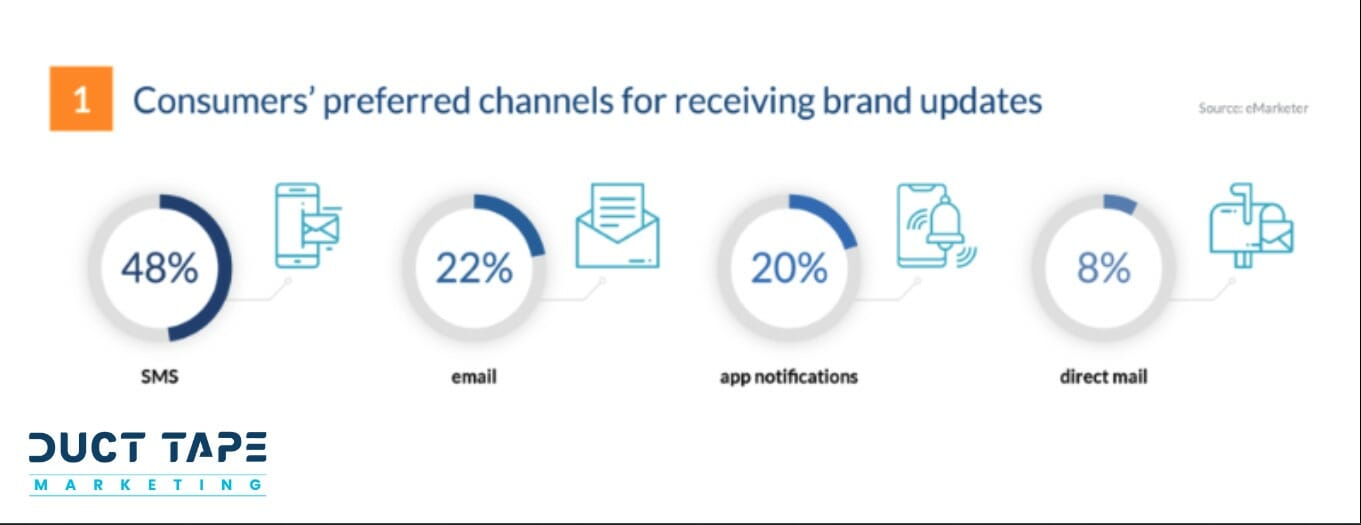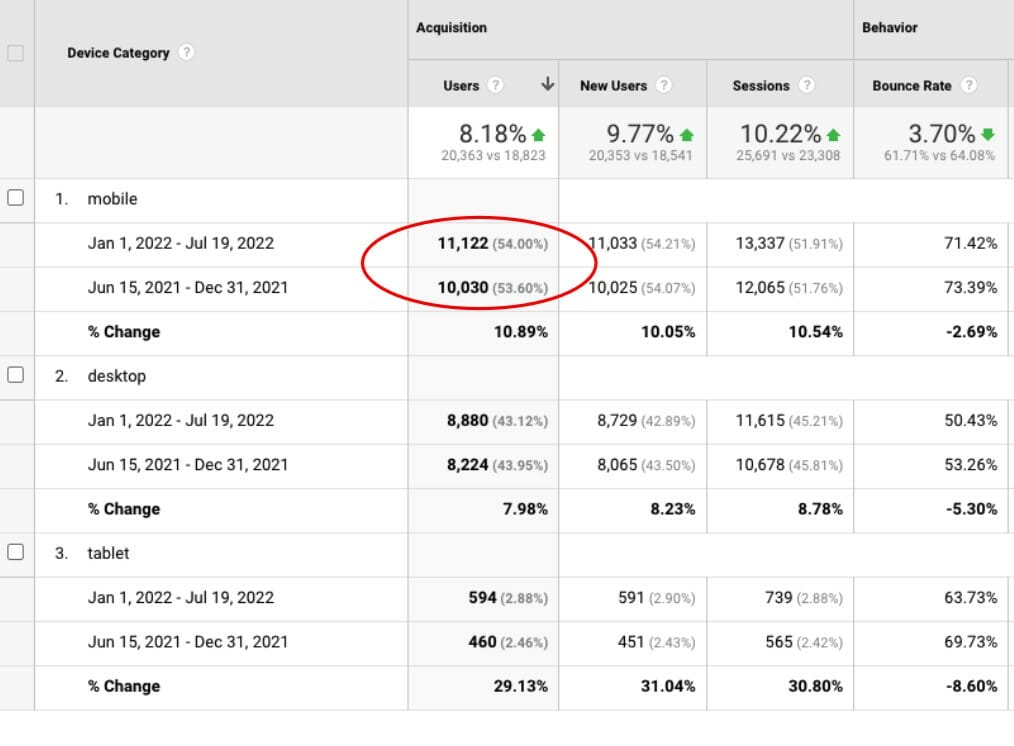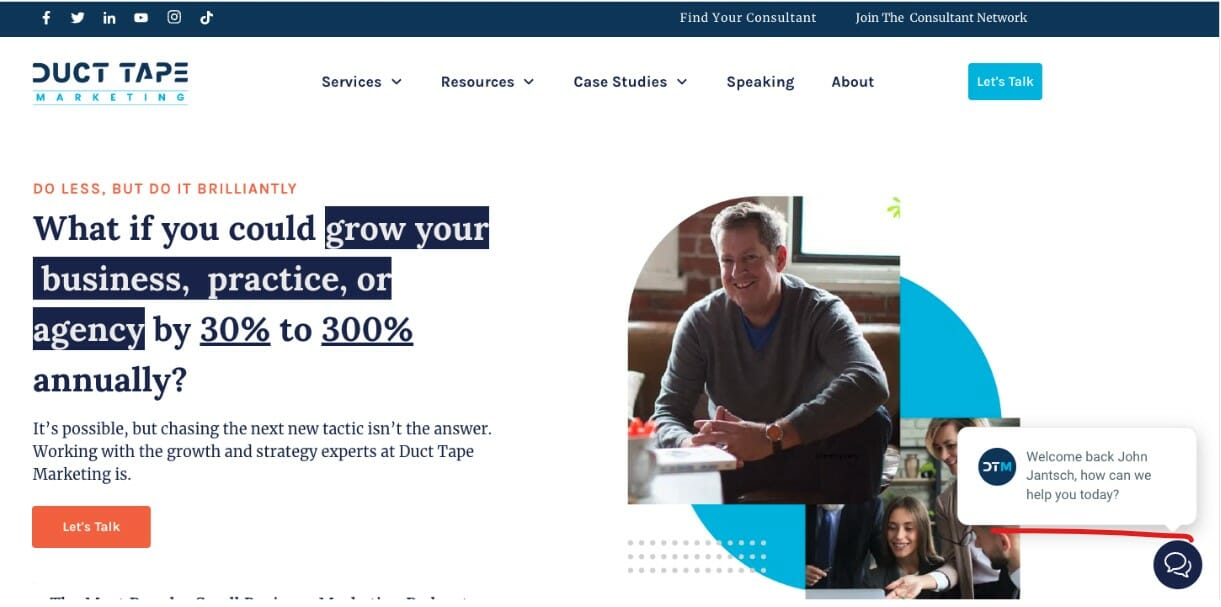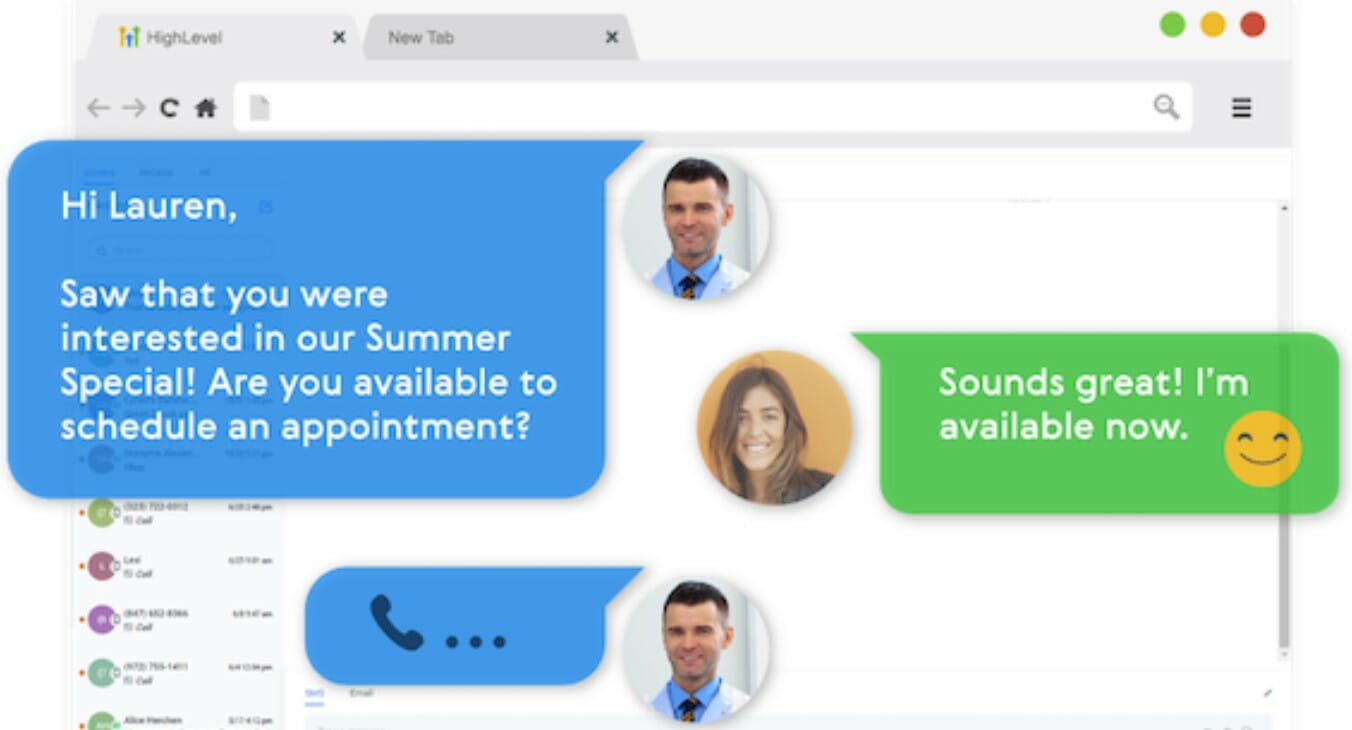How to Build Trust with Clients: A Proven Strategy Guide written by Shawna Salinger read more at Duct Tape Marketing
Longevity and success in business depends on establishing client trust. Picture this: You’re meeting a potential client for the first time. Within the first few moments, they’re sizing you up, evaluating not just your credentials but also your demeanor, your communication style, and most importantly, your authenticity.
How to Build Trust With Clients
To make that great first impression, authenticity is key. It’s not about showcasing your achievements; it’s about being genuinely interested in your client’s needs and demonstrating a sincere desire -and ability- to help them succeed.
Once you’ve laid the groundwork with that initial connection, it’s time to keep the momentum going. Communication is your most powerful tool. Regular updates, transparent discussions about challenges and opportunities, and proactive problem-solving all contribute to strengthening the bond between you and your client.
But communication alone isn’t enough. Your commitment to their success must be clear in every interaction. Whether it’s going the extra mile to meet deadlines, providing innovative solutions to unforeseen obstacles, or simply being there to offer support and guidance, your dedication speaks volumes.
By mastering these components—authenticity, communication, and commitment—you’ll not only meet but exceed expectations, setting the stage for lasting partnerships.
In the following sections, we’ll explore each of these aspects, offering practical strategies and actionable insights to help you communicate effectively, build trust, strengthen relationships, and become an indispensable trusted advisor for your clients.
Table Of Contents:
- How to Build Trust With Clients
- The Components of Trust
- Building Trust Throughout the Customer Journey
- The Business Value of Trust
- Amplifying Your Referral Engine
- Beyond Business Transactions
- Measuring Trust Through Engagement
- Join 25k+ subscribers and learn more proven strategies in our weekly newsletter.
The Components of Trust
Build trust by embodying the 6 Cs: Competence, Consistency, Care, Character, Communication, and Commitment. Each of these dimensions contribute to building and maintaining trust with your clients – here’s how:
1. Competence
Trustworthiness doesn’t depend on knowing all the answers – it depends on your ability and commitment to finding them. Establishing yourself as an expert doesn’t happen overnight but through years of hard work, continuous learning, and staying updated with industry trends.
You can demonstrate competence by sharing insights on platforms like LinkedIn, contributing to industry publications, or speaking at conferences. These actions show potential clients that others value your opinion and expertise which builds trust even before they’ve worked with you directly.
2. Consistency
Your clients want to know they can count on you, every single time. So, make sure you’re delivering the goods like clockwork. Whether it’s meeting deadlines, keeping promises, or just showing up with your A-game day in and day out, consistency is your ticket to earning their trust.
3. Care
Next up, show some heart. Your clients aren’t just numbers on a spreadsheet—they’re real people with real problems. So, take the time to listen, understand, and genuinely care about what they need.
4. Character
This is all about walking the walk and talking the talk. Your clients want to work with someone they can trust, someone who’s honest, transparent, and sticks to their principles. As a service provider, you’ll deal with sensitive and private info that your clients will want to know is safe.
5. Communication
You’ve got to keep those lines of communication wide open if you want to build trust. Whether it’s sharing updates or even tackling tough conversations, make sure you’re keeping the conversation flowing. Trust me, your clients will appreciate it.
6. Commitment
Your clients want to know you’re in it to win it. Whether it’s going above and beyond to meet their needs, owning up to mistakes, or just being there to lend a helping hand, let your commitment shine through in everything you do.
Building Trust Throughout the Customer Journey
The moment a potential client encounters your brand, be it through a website visit or social media profile, sets the tone for your entire relationship. This crucial window is not just about making things look pretty; it’s about immediately communicating reliability and trustworthiness.
Studies have consistently shown that first impressions are made within seconds. What does this mean for you? Every element of your customer’s journey should be optimized to reinforce their initial positive impression. From user-friendly web design to a stress-free sales process, every touchpoint matters in maintaining trust.
To grasp how vital first impressions are, consider that 94% of users’ first impressions relate to a site’s design. Visual appeal isn’t the only factor; the simplicity of moving through and accessing content also influences how they perceive it. An intuitive layout lets visitors know you value their time and experience on your site.
Including positive reviews to build trust is a good idea, too; that social proof could be what makes your future client feel like you are the person to help them.
Maintaining this trust goes beyond the digital facade into every interaction they have with your brand. Even when someone has been working with your for a long time, it’s always important to think about maintaining strong relationships with your clients. Whether it’s prompt customer service or consistency in messaging across platforms, these actions reassure clients that they’ve made the right choice by choosing you.
To sum it up, think of each step of the customer journey as an opportunity to build a trusting relationship.
Build trust by being reliable, genuinely caring about clients’ needs and goals, and aiming for shared success. This solid foundation of trust turns a simple connection into an unshakeable partnership.
The Business Value of Trust
Building trust isn’t just about feeling good; it’s a concrete factor that drives profitability and growth for marketing consultants. When clients believe in you, they’re more likely to stick around, refer others, and pay more for your services.
Key Stats: Building trust leads to more fulfilling relationships and increased profitability.
In the world of marketing consulting, where choices abound for clients, standing out because your clients trust you can mean the difference between thriving and barely surviving. A survey by Nielsen found that 92% of consumers trust recommendations from people they know directly over any other form of advertising. The sheer importance of cultivating profound connections with clients, anchored in trust, is highlighted by this figure.
But how does one quantify this abstract concept? Increased client retention rates are one measure. Satisfied customers don’t just come back; they become evangelists for your brand without being asked. Their word-of-mouth endorsements are gold—more effective than any ad campaign could ever hope to be because these referrals come with built-in credibility.
A Harvard Business Review article highlights another crucial point: boosting customer retention rates by as little as 5% can increase profits anywhere from 25% to 95%. That’s an enormous potential return on investment simply for making sure your clients feel heard, valued, and understood—fundamental aspects of establishing trust.
Amplifying Your Referral Engine
Trust is the currency that fuels referrals and word-of-mouth recommendations. Once clients have faith in you, they’re inclined to enthusiastically recommend your services to their acquaintances.
Gaining a referral isn’t just about doing good work; it’s about creating an experience so memorable that clients can’t help but share it. Imagine delivering not just what was asked for but going beyond, turning satisfied customers into enthusiastic advocates. This approach has been shown to significantly increase the likelihood of referrals.
To make this concept actionable, consider implementing a system where feedback is not only encouraged but rewarded. A simple “thank you” note or a small discount on future services can go a long way in acknowledging their effort and encouraging further engagement.
One thing you want to keep in mind with this strategy is that you always want to be in touch with those you serve. Regular updates through newsletters or social media keep you at the forefront of their minds, making them more likely to refer you when someone asks for a recommendation.
Beyond Business Transactions
Building trust with clients goes beyond transactions and one-on-one conversations. To be trustworthy, you want to engage in continuous learning, networking, and community involvement. These elements not only deepen relationships but also showcase your commitment to growth and improvement.
Continuous Learning
To stay ahead in marketing, you need to keep learning. Demonstrating to your clientele that you’re perpetually on the hunt for fresh methodologies and technological advancements illustrates a dynamic approach rather than complacency. By attending workshops, webinars, or even enrolling in courses related to marketing trends, you demonstrate a dedication to excellence. Clients appreciate this because it means their business is getting top-notch advice.
Sharing what you’ve learned through blog posts or newsletters can be incredibly effective too. This approach allows clients to directly witness the worth of your expertise.
Community Involvement
Lending a hand not only reflects your character on a personal and career level but also echoes the essence of true leadership. Studies show this kind of engagement improves company perception while fostering deep connections within local networks. Consider volunteering or sponsoring local events if you want to highlight and communicate your company values.
Measuring Trust Through Engagement
Trust isn’t just a feeling; it’s measurable. In the world of marketing, especially for small and mid-sized firms, understanding how much your clients trust you can be seen in their actions – not just their words.
Start with retention rates. A high client retention rate signals that your patrons have faith in your consistent delivery of outcomes. If your clients are jumping ship after just a couple of months with you, it’s a good sign that they’re losing trust somewhere along the way.
Referrals are another indicator: if there’s one thing better than a satisfied customer, it’s when they become advocates for your business. A referral is essentially someone vouching for you based on their positive experience. This act alone speaks volumes about the level of trust established between you and them.
Remember, trust isn’t just a feeling—it’s a tangible asset that drives profitability, amplifies referrals, and fosters loyalty. Now that you know how to build trust with clients, keep building relationships, keep delivering excellence, and enjoy the journey of long-term business.









